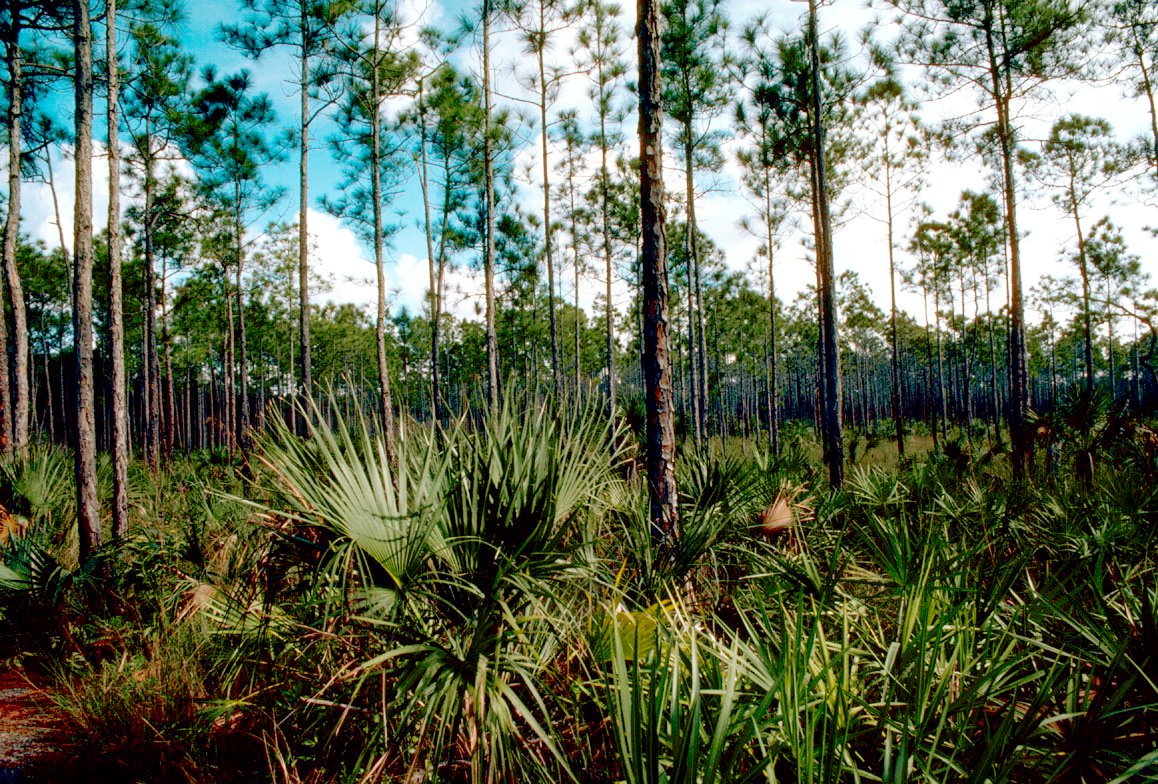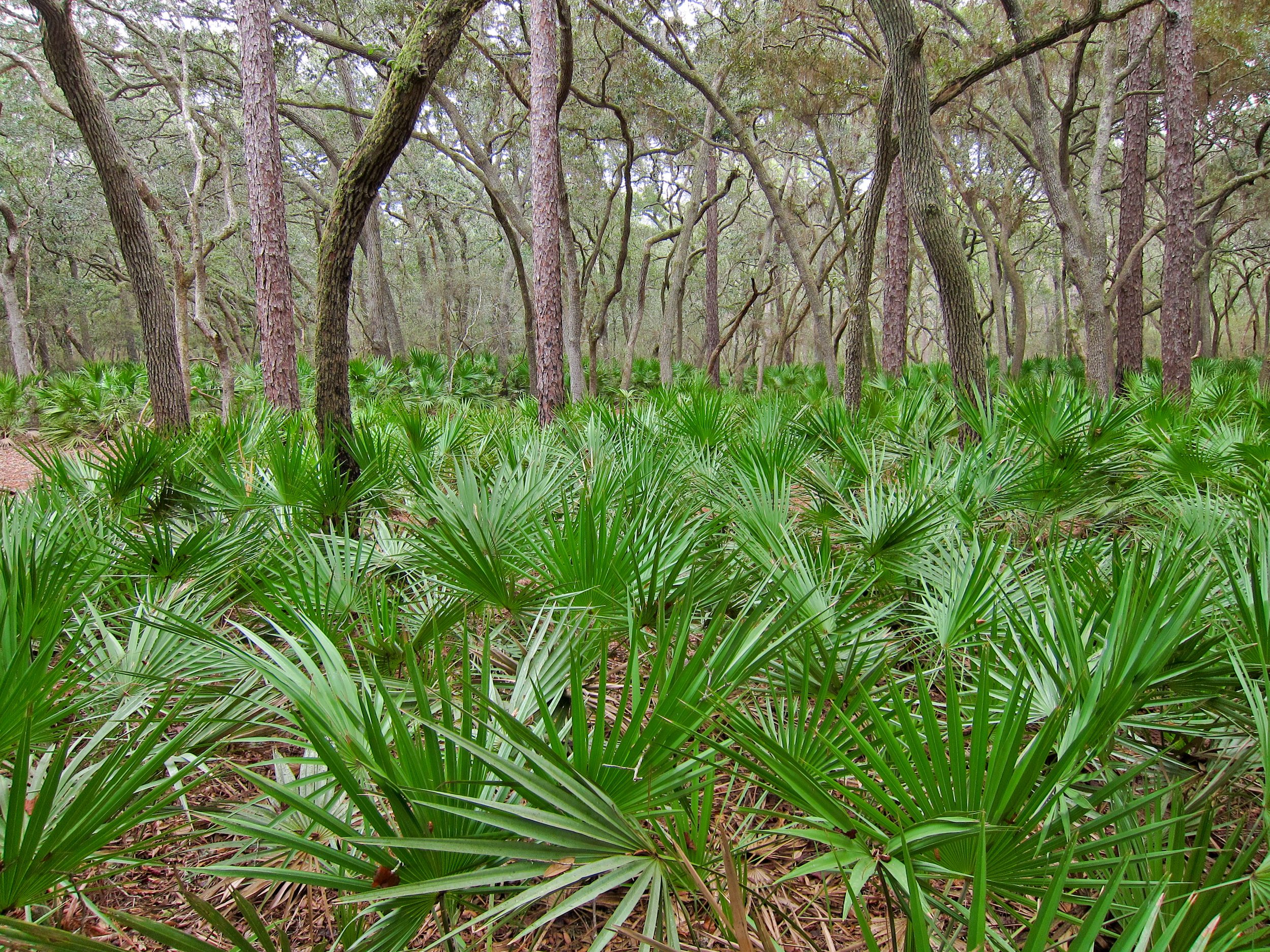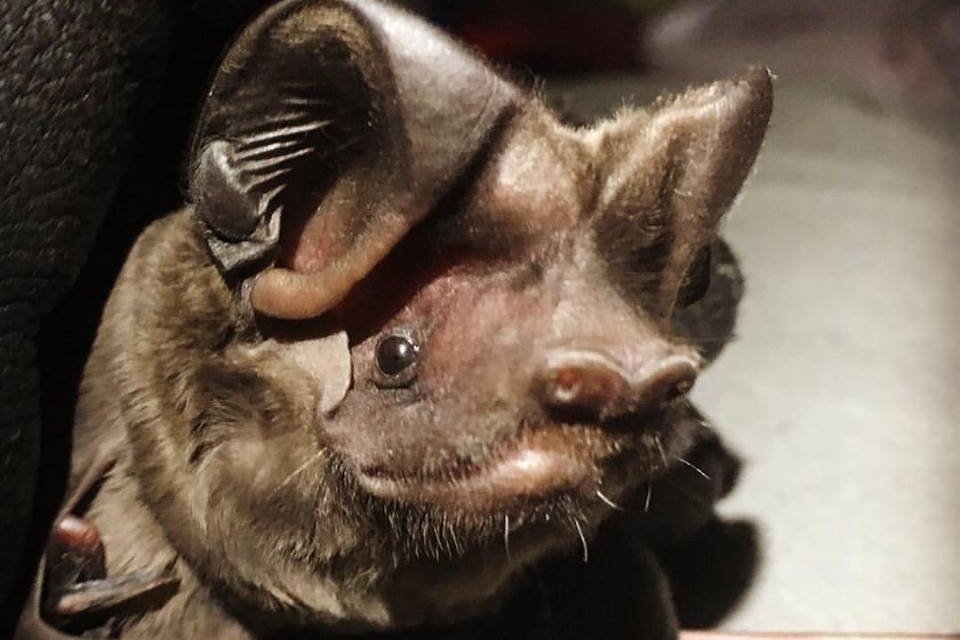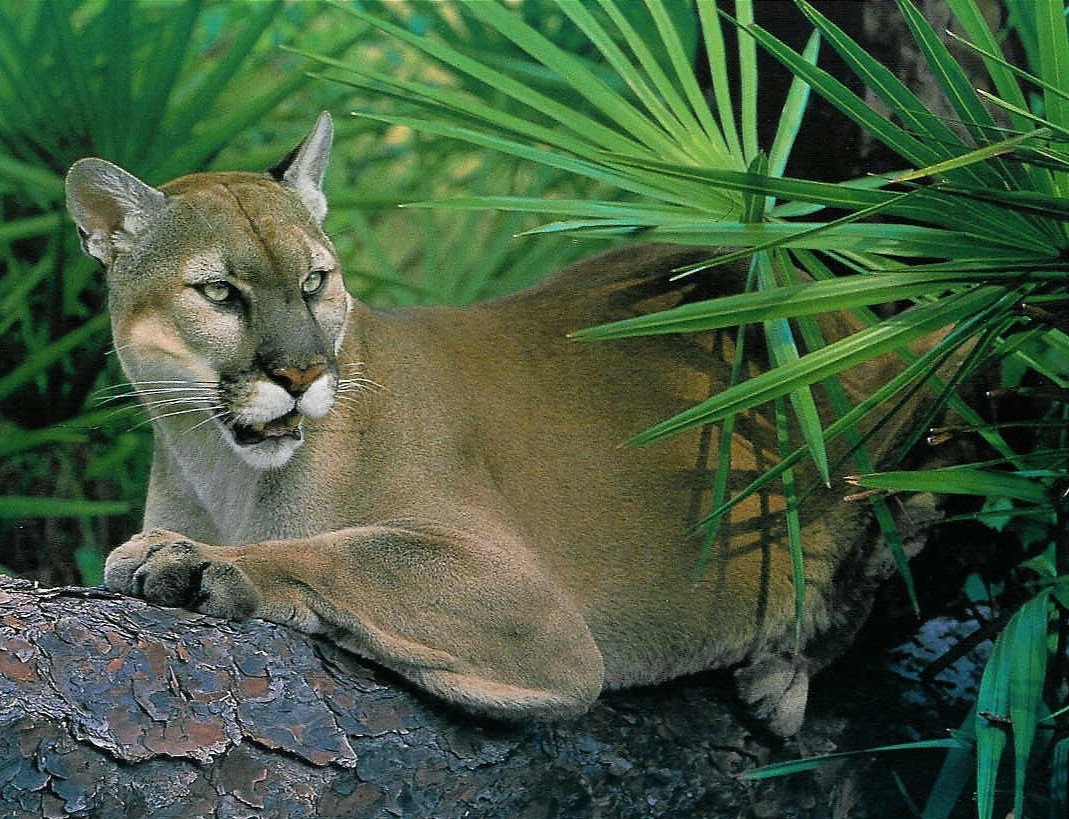
Pine Rocklands
Pine rockland habitat is a unique and endangered ecosystem found primarily in southern Florida and the Florida Keys. It is characterized by a mosaic of pine forests growing on top of limestone outcrops or rocky substrate, creating a distinctive landscape.
Like other pine-dominated habitats, pine rocklands are characterized by the presence of pine trees. The dominant pine species in pine rocklands is the South Florida slash pine (Pinus elliottii var. densa). These pine trees have adapted to the rocky substrate and are often stunted in growth compared to their counterparts in other habitats. They have shorter needles and thicker bark to withstand fires and other environmental stresses.
The rocky substrate of limestone or Miami oolite is a defining characteristic of pine rocklands. Limestone outcrops create unique microhabitats, including shallow soils, solution holes, and crevices. These variations in topography influence water availability and contribute to the diversity of plant species found in pine rocklands.
Pine rocklands have a diverse understory and groundcover. Various grasses, such as wiregrass (Aristida spp.), and shrubs, including saw palmetto (Serenoa repens) and inkberry (Scaevola plumieri), are common in the understory. Epiphytic plants like bromeliads, orchids, and ferns can also be found growing on trees or rocks.
They are known for their high occurrence of endemic plant species, meaning they are found nowhere else in the world. These specialized plants have adapted to the specific conditions of the rocky substrate, frequent fires, and other environmental factors found in pine rocklands.
Like other fire-dependent ecosystems, fire plays a crucial role in maintaining the health and diversity of pine rocklands. Regular fires help to control the growth of invasive species, promote the germination of certain plants, and create open spaces for sunlight to reach the forest floor. The South Florida slash pine is adapted to fire, with its thick bark protecting the trees from intense heat.
Pine rocklands are one of the most endangered ecosystems in the United States. The majority of the original pine rockland habitat has been lost to urban development and agriculture, resulting in fragmented patches of habitat. The remaining pine rocklands face ongoing threats from habitat destruction, invasive species, and climate change. Conservation efforts are focused on protecting and restoring these unique ecosystems and their rare and endemic species.
Types of Vegetation
Pine rockland habitat is a specialized ecosystem characterized by pine trees growing on limestone outcrops or rocky substrate. It supports a diverse array of plant species, including endemics and rare plants, and is highly dependent on fire for its ecological health. Protecting and restoring pine rocklands are critical for preserving the unique biodiversity found in this endangered habitat.
Slash Pine (Pinus elliottii)
The slash pine (Pinus elliottii) is a species of pine tree native to the southeastern United States. Slash pines are large, evergreen trees that can reach heights of 80 to 100 feet (24 to 30 meters) and have a straight, cylindrical trunk. The crown of the tree is broadly conical, with ascending branches and a relatively open canopy. The tree's shape and structure make it well-suited to frequent fires, which are common in its natural habitat.
The needles of the slash pine are dark green and grow in bundles or fascicles of two or three. Each needle is relatively long, measuring about 7 to 10 inches (18 to 25 centimeters) in length. The fascicles are twisted, giving the tree a distinctive appearance.
They produce both male and female cones. The male cones are small and yellow, growing in clusters at the tips of the branches. The female cones are larger and ovoid-shaped, typically measuring 2 to 4 inches (5 to 10 centimeters) in length. They start out green and mature to a reddish-brown color. The cones contain winged seeds, which are dispersed by wind.
The bark of slash pine trees is thick and deeply furrowed. The outer bark is reddish-brown to grayish in color, while the inner bark is reddish-orange. The bark provides protection to the tree during wildfires and helps it withstand heat and survive.
Slash pines are primarily found in the southeastern coastal plain of the United States, ranging from southern Virginia to Florida and westward to eastern Texas. They are commonly found in wet or seasonally flooded areas, such as flatwoods, swamps, and bottomlands. Slash pines can tolerate a wide range of soil conditions, including sandy and poorly drained soils.
They play a significant ecological role in their habitat. They are considered fire-adapted trees, with thick bark that protects them from fire damage. They have a symbiotic relationship with mycorrhizal fungi, which help them obtain nutrients from the soil. The trees provide important habitat for various bird species, including the endangered red-cockaded woodpecker, which excavates cavities in the trunks for nesting.
Slash pines are commercially important for their timber. The wood is versatile and used for construction, pulp production, and other applications. The tree's ability to grow relatively quickly makes it an important species for reforestation and afforestation efforts.
Understory
The understory of pine rockland habitats is an important component of the ecosystem that supports a diverse array of plant species. Here are some examples of the plants that can be found:
Saw Palmetto (Serenoa repens): Saw palmetto is a low-growing palm species that is common in pine rockland understories. It forms dense clumps and has distinctive fan-shaped leaves that can grow up to five feet long.
Dwarf Wax Myrtle (Myrica cerifera var. pumila): Dwarf wax myrtle is a shrub species that grows to a height of about six feet. It has leathery, fragrant leaves and produces small, waxy berries that are an important food source for birds and other wildlife.
St. John's Wort (Hypericum spp.): St. John's wort is a herbaceous perennial plant that grows up to three feet tall. It has small, bright yellow flowers and produces capsules containing many small seeds that are dispersed by wind.
Wild Coffee (Psychotria nervosa): Wild coffee is a shrub species that grows up to six feet tall. It has glossy leaves and produces small, fragrant flowers that attract bees and other pollinators.
Fetterbush (Lyonia lucida): Fetterbush is a shrub species that grows up to ten feet tall. It has leathery leaves and produces small, white flowers that attract butterflies and other insects.
Pineland Lantana (Lantana depressa): Pineland lantana is a low-growing shrub species that grows up to two feet tall. It has small, aromatic leaves and produces small, pink or white flowers that attract butterflies and other insects.
Blazing Star (Liatris spp.): Blazing star is a herbaceous perennial plant that grows up to three feet tall. It has spikes of purple or pink flowers that attract bees and other pollinators.
Endangered Species Living in Pine Rocklands
Florida Bonneted Bat
Florida Burrowing Qwl
Short-tailed Hawk
Pineland Croton
(Croton linearis)
Carter's Small-flowered Flax Lily (Dianella carterae)
Garber's spurge (Chamaesyce garberi)
Red-cockaded Woodpecker
Key Deer
Eastern Whip-poor-will
Key Largo Woodrat
Miami Blue Butterfly
Florida Panther



















